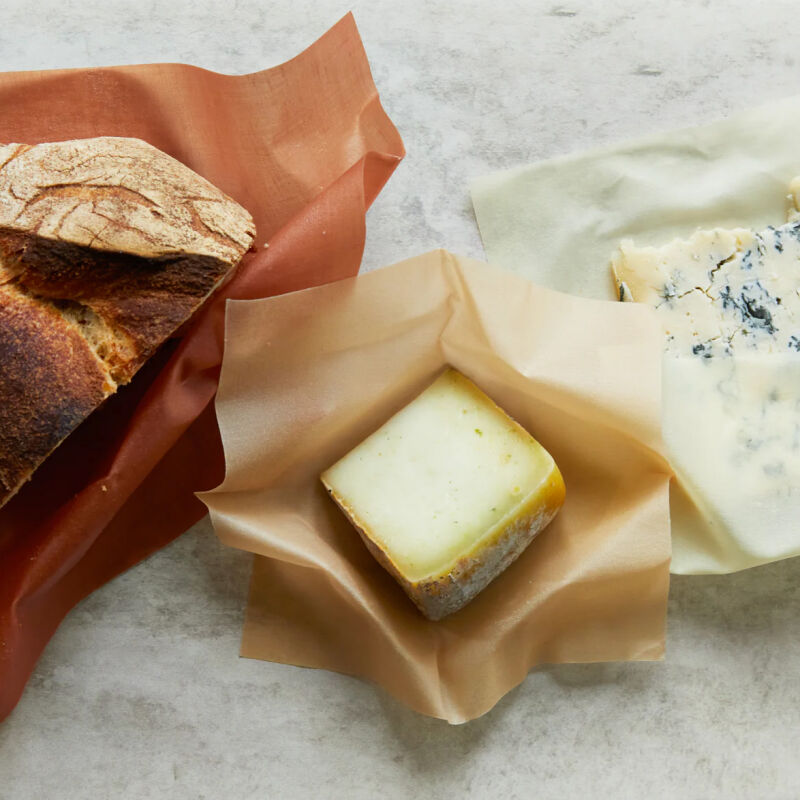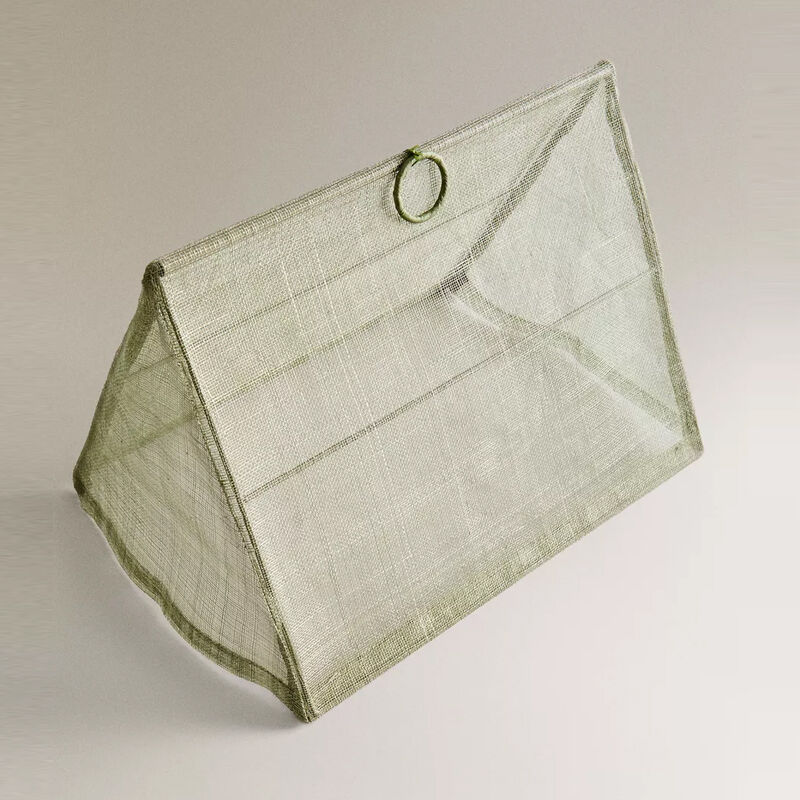When Bea Johnson, her husband, Scott, and their two children moved from a large house to a temporary apartment while they were looking for a new home in Marin, California, they put much of their belongings in storage and lived with just the necessities. Doing so proved to be an epiphany when they realized that they really did not need all the stuff that they had accumulated. This was also the genesis for Bea’s move to embrace simplicity; soon after, she started her blog Zero Waste Home–and that led to a Zero Waste Home book and consulting service. She points out that purging her home of waste was a slow process to begin with, but once she started paying attention to consumption and the way her family lives, the easier it became. And lest you equate living simply with dowdy and dull, think again. Here, she tells us how we can do the same by considering 10 ways to live with less.
Photography by Bea Johnson of Zero Waste Home.
For Bea’s zero waste garden advice, see our post on Gardenista: 10 Tips for a Simplified Garden, to Grow More with Less.

Remodelista: What do you have in your living room?
Bea Johnson: A living room is for entertaining, watching TV, and reading. Things that do not accommodate these activities have no place here. Generally all that is needed is a place for your receiver and cable box, comfortable seating, a couple of throws, a reading light, and maybe a coffee table (we use a tray instead). We added a living wall to allow plants to clean our indoor air, and chose a hanging chair to simplify sweeping. The less on the floor you have, the easier it is to clean. We also found that over time we grew tired of pictures on walls, and that once the novelty sensation went away, we would not even look at them anymore. I also find artwork to be a burden to move. Today, I prefer murals as they add color to a room without adding to your load. They are easy to change (simply paint over when you no longer “see” them) and they do not need to be packed for a move.

RM: What’s essential in a kitchen and what can you do without?
BJ: You can achieve a simple kitchen in three easy steps: 1. Empty drawers and cupboards and let go of all the things that you know you do not use. Donate duplicates–this is a good time to let go of toxic plastic spoons. 2. Put aside items you are hesitant to give away (in the attic or in a box) and test your usage over a couple of months. You’ll realize it’s OK to give away those items that you do not really need. 3. Refine. Question even those things you always thought you had to have. I let go of my vegetable peeler and have lost the reflex to peel those veggies that do not need peeling. As a result, food prep is much faster, my compost output (peelings) is considerably reduced, and we benefit from the vitamins that are locked into vegetable skins.

RM: Your zero-waste approach to a pantry?
BJ: Find out what your staples are, and stick to one type of each. For example: there is no need to hang on to several types of rice and pasta; your least favorite will get pushed to the back of your cabinet and get spoiled by the time you have the energy to clean out your pantry. For example, we store one type of pasta, one type of grain, and one type of legume. When we finish one, we buy a different type (we’ll go from lasagna to penne in our pasta jar).
RM: In your dining room?
BJ: If the purpose of a dining room is for dining, what do you really need in there besides table and chairs? Our dining table is our most-used piece of furniture in the house. Keeping it uncluttered eases the transition from homework to dining. We keep a bowl of fruit in the center of the table to make it irresistible for the kids to grab some as a snack–it’s functional decor. We keep the fruit bowl on nesting trivets so when we set the table, we remove the bowl but leave the trivets so they never leave the table and I never have to wait around with a hot dish in my hands.

RM: Approach to decor?
BJ: We decorated our stairs with some of the kids drawings. We figured that instead of letting them sit in a “memory box” we would put them to good use and enjoy them as part of our decor. To create the collage, I simply applied varnish (white glue also works) to the risers of my steps, then applied the paper, then coated it with the same medium (varnish or glue).

RM: How do you keep the accumulation of stuff in check with your kids?
BJ: The kids have learned that the simple life makes cleaning their room a breeze. They have also learned that when they grow out of something, they can turn around and sell it on eBay or Craigslist to buy an age-appropriate replacement. They sold their Legos recently, for example. When they were younger, we went through their toys together and they picked their favorite toys. We then assigned a bin to each type of toys. (I go more into depth about the process in my book, Zero Waste Home).
RM: How have you enlisted your children in this approach to living?
BJ: When we started simplifying our lives, our boys were 5 and 6–they are now 11 and 13. We thought that by the time they reached their teenage years, things would be tougher, but they have in fact been easier. They have lived simply now for half their lives and they no longer ask for things because of peer pressure. I find myself asking them if they want something more than they ask me.
RM: What are your essentials for a bathroom?
BJ: When we remodeled our bathroom, we took cleaning and efficiency into consideration. I do not enjoy cleaning bathrooms so we tiled the whole room and created a “wet” bathroom. The shower is open and the floor slanted. When it’s time to clean, we can simply hose the floor down and wipe it clean. We do not have open shelves, but there’s a medicine cabinet for our necessities.

RM: Advice on tackling the bedroom and even more importantly, the wardrobe?
BJ: What else do we need in there besides a bed and reading lights? For the wardrobe, there is a very simple rule that I like to remind my clients (I offer simplifying services): “What you do not have does not need to be organized!” The less we have, the easier life becomes. Paring down your wardrobe is about picking your favorite pieces (the ones you always find yourself reaching for) and having a closet full of things to wear. It does not hinder decision making, it makes it easier to make choices and it greatly reduces our washes. Our boys, for example, have eight tops and four bottoms per season. It has taught them to manage their wardrobes, they now think twice before changing mid-day for no reason. It shows on laundry day.

RM: So this is all you have?
BJ: Today we only live with the necessities and we could not feel happier, free from the burden of stuff. “Living with less” has allowed us to “live more,” by opening time in our lives to do the things we enjoy doing. Our lives are now based on experiences versus stuff. Living simply has even allowed us to rent out our house when we’re away; it helps fund our holidays, weekend getaways, and trips abroad.
RM: One simple takeaway for living with less–beyond composting and carrying bags to the market?
BJ: Our Zero Waste lifestyle is based on applying the 5 R’s: Refuse, Reduce, Reuse, Recycle, Rot. The most important thing one can do to stop waste and clutter entering the home is to simply say no. Think before accepting something that is handed out to you. Turn down flyers, freebies, party favors, business cards, single-use plastics (such as flimsy grocery bags), and fight junk mail. Accepting these things creates a demand to make more; they are a waste of resources and once they are brought into our homes, they add to the clutter and require effort to dispose of later. Refusing is the first rule to living a Zero Waste simple lifestyle. Give it a try, you’ll be amazed by how much stuff you’ll be able to stop from coming in.
Above: Zero Waste Home is available on Amazon for $13.72.
You can read more about Bea in a profile that Gardenista editor Michelle Slatella wrote several years ago for her New York Times column when they were neighbors.
Ready to explore more about the intersection of design and well being? Read Julie’s post 10 Secrets for a Better Night’s Sleep and our wellness expert Jackie Ashton’s 10 Secrets for Happy Housekeeping.
N.B.: This post is an update; the original story ran on May 31, 2013 as part of our issue, The Kids Are All Right.
Frequently asked questions
What is Zero Waste Home?
Zero Waste Home is a movement that aims to reduce waste generated by households, businesses, and individuals to as close to zero as possible. This movement is based on the 5 R's: Refuse, Reduce, Reuse, Recycle, and Rot.
What are some tips for living with less waste?
Here are 10 tips to help you live with less waste: 1. Refuse single-use items 2. Bring your own bags, containers, and utensils 3. Buy in bulk 4. Compost 5. Declutter your home 6. Use cloth instead of paper 7. Insulate your home 8. Use reusable water bottles 9. Repair and repurpose 10. Support companies with sustainable practices.
How can I reduce my carbon footprint?
Here are some tips to reduce your carbon footprint: 1. Reduce energy usage 2. Use public transportation or walk/bike instead of driving 3. Buy local 4. Eat less meat/dairy 5. Choose sustainable products 6. Plant trees 7. Reduce, reuse, and recycle 8. Use renewable energy sources.
How can I compost at home?
To compost at home, you can use a compost bin or pile. You can compost fruit and vegetable scraps, coffee grounds, eggshells, yard waste, and more. Avoid composting meat, dairy, and oily foods. Compost needs to be regularly turned over and kept moist. Once it's ready, compost can be used as fertilizer for plants and gardens.
Why is it important to live with less waste?
Living with less waste is important because it helps reduce the negative impacts of waste on the environment. Overflowing landfills, air pollution, and contaminated water sources are just a few of the problems caused by excessive waste. By committing to zero waste practices, we can reduce our carbon footprint, conserve natural resources, and protect the planet for future generations.





Have a Question or Comment About This Post?
Join the conversation